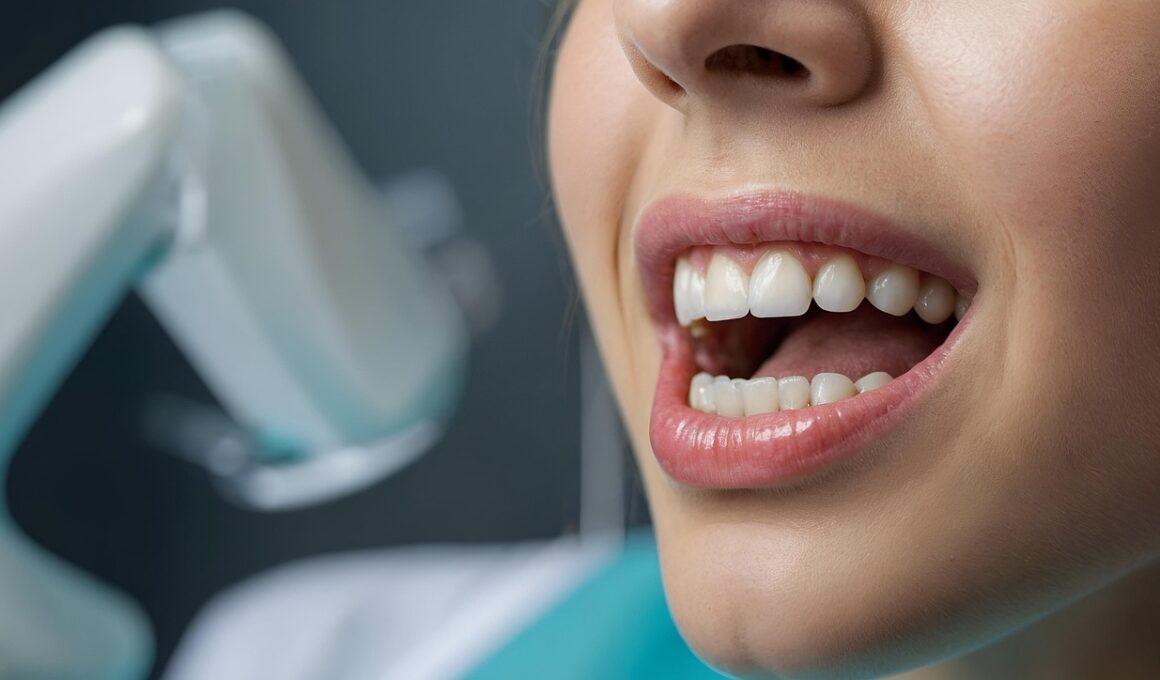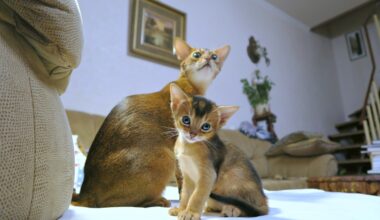Emergency Protocols During Cat Dental Anesthesia Procedures
Cat dental anesthesia safety is a vital aspect of feline oral health, requiring comprehensive planning. It’s essential for pet professionals to prepare their clinics for any emergencies that may arise. First, create a checklist of emergency supplies that are regularly maintained and readily accessible. This includes oxygen tanks, intravenous fluids, and emergency medications. Staff must undergo routine training to stay sharp on these protocols. Make sure all team members are familiar with the equipment and steps involved. Going a step further, practicing mock drills can enhance preparedness. Regularly review the protocols to incorporate new learning and experiences. Moreover, having a clear communication channel among staff can help streamline emergency responses. This prevents confusion and ensures everyone knows their roles during a critical moment. Establishing these strategies can significantly reduce stress for both cats and their owners. It reassures pet parents that their furry friends are in capable hands while undergoing dental procedures. Implementing these thorough measures sets the foundation for every positive anesthesia experience, turning it into a safer endeavor for the kittens and the staff alike.
Before anesthetizing cats for dental procedures, a thorough assessment is crucial. Evaluating the cat’s medical history and current health can minimize risks significantly. Blood tests, a full physical exam, and discussions regarding any underlying health conditions should precede anesthesia. Pre-anesthetic medications can help stabilize the cat and reduce anxiety. The choice of anesthetic agent chosen is also essential. Certain drugs carry lower risks for specific breeds or health conditions. Understanding these factors deepens the safety net during surgery. Moreover, appropriate monitoring is paramount during anesthesia. Use of pulse oximeters, capnography, and ECG provides insights into the cat’s vitals. Continuous observation allows for quick adjustments or interventions. Ensuring the cat has safe intravenous access is key Should complications arise, the veterinary staff can respond instantaneously. Discussing these preparations with the cat’s owner can foster trust, alleviating their worries. It also provides an opportunity for educating owners about what to expect during the dental procedure. Solid preparation can bolster the effectiveness of emergency protocols and improve overall outcomes regarding dental anesthesia for our feline friends.
Post-Procedure Monitoring for Cats
Post-anesthesia monitoring happens in a controlled setting and is crucial in cat dental care. After a procedure, cats should be monitored closely until they regain full consciousness. Begin monitoring vital signs immediately by observing heart rate, respiration, and temperature. Keep an eye on the cat’s discomfort levels and administer pain relief if necessary. Once their reflexes begin to return, provide a warm, quiet space to aid recovery. An immediate assessment of the surgical site should be done, looking for signs of hemorrhage or abnormal swelling. Do not leave the cat unattended until they’re fully alert and able to stand. This period is vital to ensure the success of the anesthesia procedure. Communication among the team regarding the cat’s recovery can improve outcomes. Documenting any changes in conditions or signs of distress is crucial. If anything seems amiss, a veterinary professional should be consulted without delay. Strong monitoring protocols and attentive aftercare create a smooth recovery process. Keeping pet owners in the loop creates transparency and peace of mind during this pivotal phase of dental care.
In addition to monitoring, discuss postoperative care with the cat’s owner as part of dental education. Owners need clear instructions regarding feeding, pain management, and potential complications. Inform them to look for excessive drooling, difficulty eating, or any unusual behaviors. They may consider using a soft diet to ease their cat’s recovery. Ensure they understand any prescribed medications to maintain proper pain management. This helps owners be proactive, ensuring comfort and safety. Providing written instructions can serve as a helpful reminder. Frequent follow-ups and willingness to address concerns can offer additional reassurance to owners. An open line of communication encourages questions and proper understanding. Making sure owners are aware of when to notify a veterinarian enhances proactive care. This structured follow-up reassures owners that their pet is healing well. Ultimately, educating pet owners strengthens the veterinary-client relationship. A well-informed client is an empowered pet parent. Their involvement is critical, as it complements the meticulous work done in the veterinary clinic. It also breeds a sense of community around caring for dental health in cats. Such preparations make a substantial difference in feline dental care.
Dealing With Anesthesia Complications
Despite all precautions, anesthesia complications can still occur, making it essential to have protocols in place. Recognizing early signs of complications can greatly improve the response time. For instance, if a cat exhibits signs of respiratory distress or abnormal heart rhythms, immediate measures should be taken. Oxygen supplementation may be necessary, alongside adjusting the anesthetic depth. Trained staff should perform diagnostics swiftly to implement the correct intervention, minimizing potential harm. Having a clearly outlined chart for common complications can aid veterinary teams in responding effectively. Physicians should ensure that all equipment is functioning correctly during dental procedures. If complications escalate, restarting the anesthesia procedures may be required in consultation with the veterinary team. Clear guidelines can greatly speed up the response to any anesthesia issues experienced. Following protocols consistently means that team members are less likely to panic during critical moments. Regular training and meetings can keep staff apprised of the latest techniques and protocols for handling anesthesia complications. Drills that simulate crises can bolster the knowledge and preparedness of the team, which directly benefits feline patients undergoing dental care.
Lastly, reviewing emergency protocols after each dental procedure is invaluable. The dental team should take time to assess what went well and what needed improvement. Involving all team members in these discussions strengthens the collaborative approach. Each member can offer insights based on their experiences, creating a comprehensive review of processes. This also helps to enhance the team’s skill set, ensuring they are well-prepared for any future emergencies. Wrapping up a review helps reinforce the importance of continuous education and staying updated with best practices. Written records of these reviews can serve as a valuable reference for later procedures as well. Regular assessments ensure that the dental practices stay current within the field. It is about embracing a culture of safety and preparedness in feline dental anesthesia. Such diligence not only protects the cats but also enlightens the entire veterinary team. The recommendations and insights gleaned from these reviews may lead to the development of even better emergency protocols over time. This will ultimately enhance the safety and comfort of all cats undergoing dental procedures.
Conclusion
In conclusion, prioritizing safety during cat dental anesthesia is critical. Thorough preparation, vigilant monitoring, owner education, and regular reviews establish a strong foundation for successful procedures. By establishing transparent communication with pet owners, anxiety may be diminished before the procedure. Creating a reassuring environment not only builds trust but can enhance overall experiences in veterinary care. Each team member also needs to be equipped with the tools necessary to manage any emergencies. Regular practice of protocols ensures a swift response during real emergencies. Preparing for potential complications before they arise can drastically improve outcomes. Investing in training and continued education for veterinary staff is paramount. It’s equally important to keep abreast of advancements in anesthesia safety, which can save countless lives. Future innovations in the field may lead to even safer procedures. The ultimate goal is ensuring that cats receive the best care possible. By implementing these guidelines and ensuring thorough emergency protocols are in place, we can ensure a more successful and safe journey through dental procedures for our beloved felines.
Feline dental health is essential, and anesthesia safety during dental procedures plays a significant role. Our unwavering commitment to the protocols can ensure cats receive the safest, highest standard of care. Numerous lives can be positively impacted through structured emergency plans designed for use by vet teams. Regular practice and updates create a culture where everyone feels competent. This attention to detail in cat dental anesthesia will contribute positively to both healthcare delivery and overall pet well-being. Remember to collaborate with pet owners for the best outcomes. Engaging them helps create a well-informed support system around each pet’s needs. This holistic approach towards care keeps both the veterinarians and pet owners actively involved. The outcome is a healthier and happier cat population. As we continue to improve these practices, we will pave the way for more innovative approaches to feline care. Consistent dedication to safety can transform the experiences of both cats and their owners alike. The future of cat dental anesthesia looks bright with ongoing efforts towards enhancement and vigilance in care.


